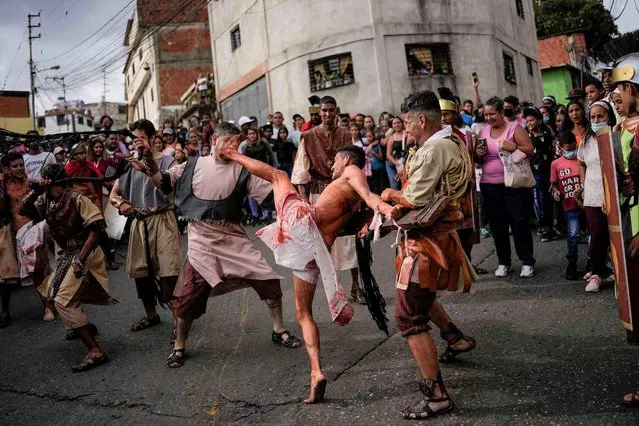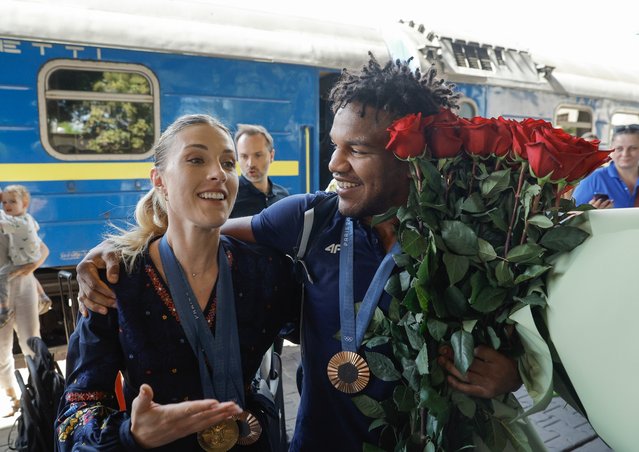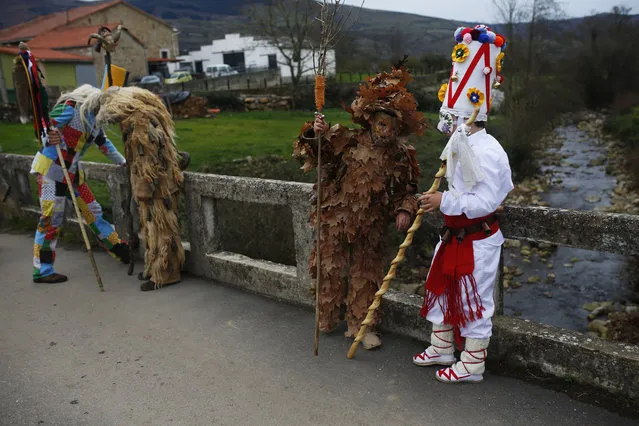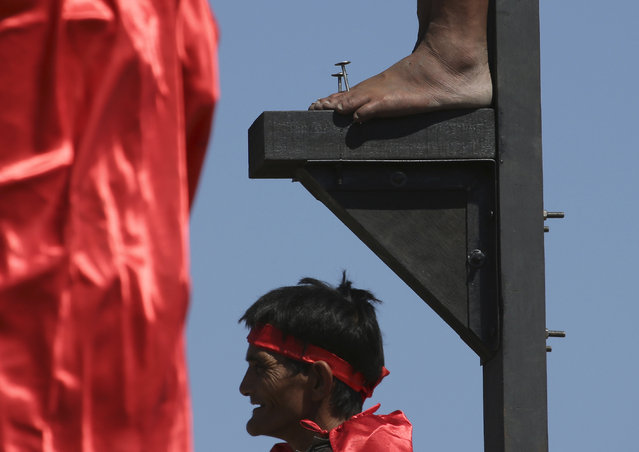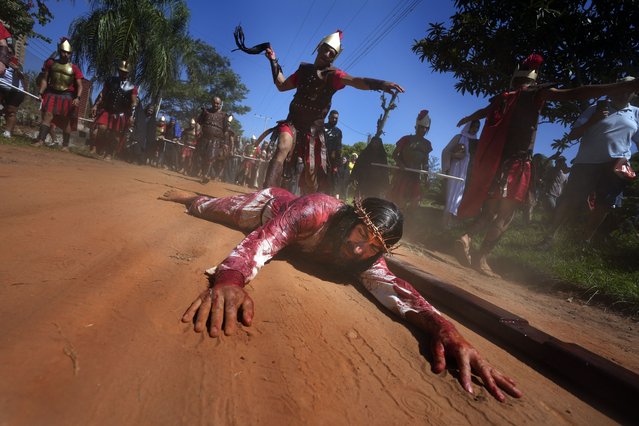
An actor, playing the role of Jesus Christ, is whipped by a Roman soldier as he falls during a Way of the Cross reenactment, as part of Holy Week celebrations, in Atyra, Paraguay, Friday, March 29, 2024. Holy Week commemorates the last week of Jesus' earthly life which culminates with his crucifixion on Good Friday and his resurrection on Easter Sunday. (Photo by Jorge Saenz/AP Photo)
13 Jun 2025 03:28:00,post received
0 comments

